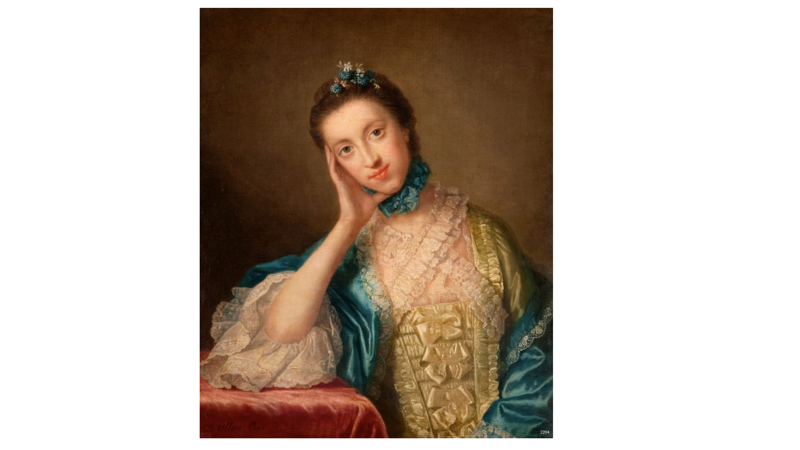Lady Jean Grant and Caribbean Slavery

Jean Duff, Lady Grant, 1746-1805, by David Allan
2204
Images © CSG CIC Glasgow Museums Collection
2nd April 2020
In 1940 this portrait of Jean Duff, Lady Grant (1746-1805), painted by David Allan (1744-1796) in 1780 entered Glasgow Museums collections without any news coverage. The painting has been displayed in Kelvingrove since 2006 as an example of Scottish art and civility. The obituary written for her in 1805 praised her goodness and piety. She appears to have been as she appears in the painting – amiable. But, was she so amiable and did she know about Scotland’s participation in the slave trade?
In 1763 she married Sir James Grant of Grant, 8th Baronet. Becoming Lady Grant put her beside the head of the clan and party to not only her own immediate family’s business but also the affairs of other Grants. Surviving correspondence shows that she knew about her family, and other Grants’ involvements with Caribbean slavery.
The Grant chiefs had invested in slavery long before Jean Duff joined the family. There is evidence that they kept personal enslaved boys as a representation of wealth, status and interests in the British Empire. In 1737 Ludovick Grant of Grant had interests in Nova Scotia, which he marketed in Edinburgh on his newly painted carriage, and dressing his black servant standing beside him in new clothes. Twenty years later, Sir Ludovick Grant, now in London, spent money on educating ‘the young black’ enslaved servant he had with him there. The properties they owned and rented, the carriage and personal slaves presented the family as champions of British white privilege, and superiors.
Grant of Grant were based in Moray in Castle Grant. Looking to make the most of trade and commerce in the 1760s, it backed establishing the new towns of Grantown and Lewistown, although the latter never materialised. Grantown had links with slavery through tradesmen from Antigua, and cloth from its textile mill was transported to Africa where it was intended for trade in enslaved human beings.
By 1785 Lady Jean Grant herself assessed the plaid being made for Africa before they were sent alongside Dr William Grant of Rothiemurchus, a London physician who had retired to Moray. Together they assessed lengths, patterns, colours, textures knowing that ‘the Black Fellows will pay for quality…and Colour’. Dr Grant wrote to Lady Grant on making woollens for Africans to ‘dress Negroes in their own way, according to their ridiculous Fancy’. From such letters it is clear that Lady Grant endorsed trade from her estate to Africa. Letter after letter came to Sir James Grant of Grant about various Grants in Jamaica which described life there and on plantations. There can be little doubt that Lady Jean knew about this.
There can also be little doubt that she was fully aware of the economic and political benefits of being seen to support the colonies. When not living in Moray, both husband and wife lived in fashionable Canongate, beside Edinburgh. It was here that Allan painted the portrait. It was here that Lady Grant would have been equally aware of Scotland’s investments in slavery and Empire by seeing the occasional black slave in the streets of the New Town, or partaking of the city’s social events at the coffee houses, assemblies and private house parties where sugar, coffee, hot chocolate, rum punch and pineapples were presented and consumed. She may even have known that the blue clothes that she wore for Allan were dyed with the indigo grown by enslaved people.
Dr Anthony Lewis,
Curator of Scottish History
